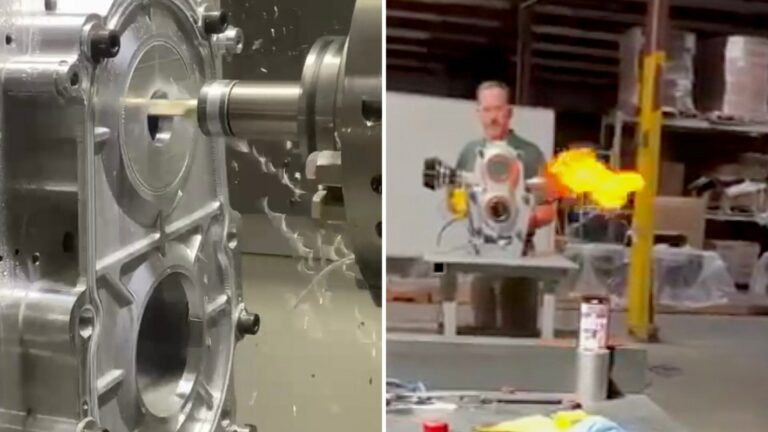Hydrogen-Burning Engine Promises a Greener Future
Astron Aerospace, a Kansas-based company, is making waves in the automotive industry with its innovative hydrogen-burning engine. This groundbreaking technology promises to transform internal combustion engines, making them a more sustainable alternative.

Matthew Riley, the inventor of the H2 Starfire engine, wrote on the company website, “We’re thrilled to reveal our groundbreaking engine technology designed to usher in a greener and more sustainable future.” The engine runs on hydrogen and primarily releases water as a byproduct, eliminating heat-trapping emissions.
According to Interesting Engineering, the engine is expected to achieve a 60% efficiency rate, significantly surpassing the 20% to 40% efficiency of traditional gas-guzzling engines. A 12-second video clip on the company’s website shows the engine in action, operating with sounds familiar to internal combustion engines.
Astron emphasizes the engine’s compact design, minimal friction, and low maintenance. The design uses fewer than 100 parts, and the company anticipates its engines will operate for over 100,000 hours between overhauls. For speed enthusiasts, the engine promises nearly instantaneous throttle response.
While the technology holds great promise, the environmental impact of hydrogen production is a key consideration. Most commercial hydrogen in the U.S. is currently produced using methods that rely on dirty energy sources, as reported by the Environmental Protection Agency. Electrolysis, which uses electricity to separate hydrogen from water, offers a cleaner alternative, especially when powered by renewables.
The Sierra Club supports only hydrogen produced using the latter method. When used in a fuel cell, the only byproducts are heat and water vapor. However, combusting hydrogen does release some nitrogen oxide, which the club identifies as a harmful pollutant in details included in a hydrogen fact sheet. The U.S. Energy Department notes that existing and emerging technologies can reduce these emissions.
The government is actively supporting the development of hydrogen as an alternative fuel through various programs and initiatives, including a federal-backed operation in Texas. Riley envisions his engine powering various applications beyond passenger cars, including municipal generators, heavy-duty commercial vehicles, and even aerospace systems.
As the transition to cleaner energy sources accelerates, battery technology is also improving rapidly in both the vehicle and energy storage sectors. Replacing a gas-guzzler is helping drivers save money while preventing the release of air pollution that can create lung-troubling health concerns.
Tax incentives, such as federal tax breaks of up to $7,500 for eligible new EVs, further encourage adoption of cleaner vehicles. Other advancements in hydrogen technology are contributing to the fuel’s growing momentum. For example, San Francisco is currently testing ferries powered by this alternative energy source.
While IE’s report suggests that more work is required before Astron’s prototype hits the market, Riley is optimistic about the technology’s potential and is encouraging others to join the movement towards a more sustainable future.
“Join us on the journey toward a greener and more powerful future,” Riley said on Astron’s website.



